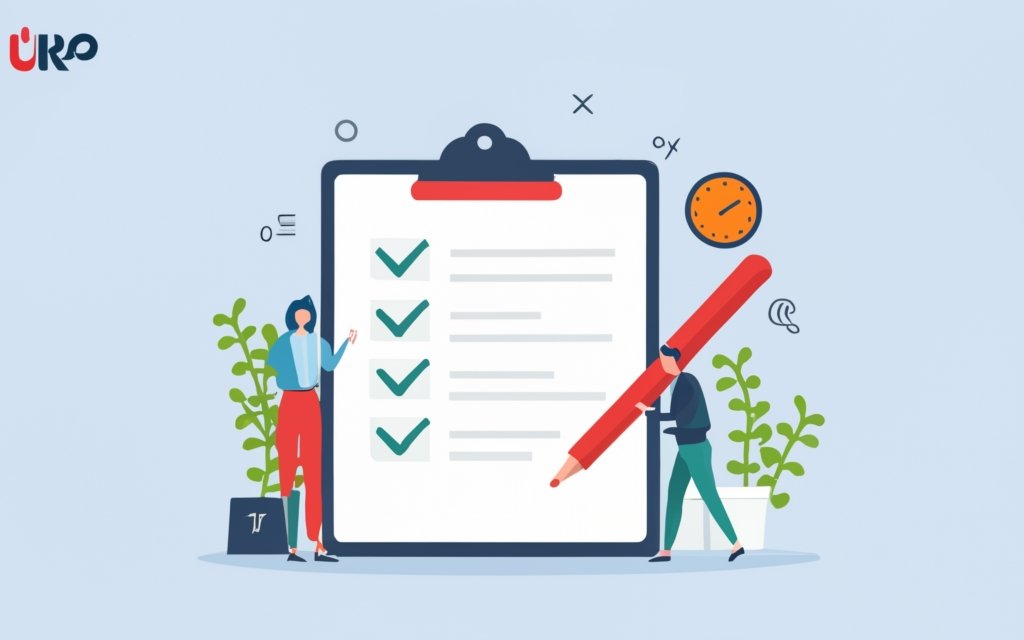
The DP203 certification exam is quickly becoming one of the most popular Azure certifications for aspiring data engineers. As organizations continue migrating their data workloads to the cloud, passing the DP-203 exam can help fast-track your career by validating your skills in designing and implementing data solutions on Microsoft Azure. However, preparation is key as the exam covers a broad range of topics and technical concepts.
This comprehensive guide breaks down everything you need to know to pass the DP203 exam. You’ll gain an in-depth understanding of the exam structure, key concepts, and proven strategies to help you succeed on your first attempt. Let’s get started!
Introduction to the DP203 Exam
The DP-203: Data Engineering on Microsoft Azure exam measures your ability to accomplish core technical tasks around designing and implementing data storage, developing data processing, and securing, monitoring, and optimizing data storage and processing in Azure.
It’s one of the exams required for the Microsoft Certified: Azure Data Engineer Associate certification, demonstrating your expertise in Azure data workloads.
Understanding the key concepts tested in the exam is crucial for your preparation and success. This guide will provide that firm foundation.
Understanding the DP203 Exam in Detail
Let’s first get a more thorough overview of the DP-203 certification exam:
Exam Details
- Name: DP-203: Data Engineering on Microsoft Azure
- Length: 100-150 minutes
- Format: 40-60 multiple choice and multi-select questions
- Passing Score: 700 out of 1000
Skills Measured
The DP-203 exam measures skills across three key domains:
- Design and implement data storage (25-30%)
- Design and implement non-relational data stores like Azure Cosmos DB, Azure Blob storage, Azure Data Lake Storage, and others
- Design and develop data processing solutions like Azure Stream Analytics, Azure Databricks, and Azure HDInsight
- Implement data partitions for parallel processing and improved performance
- Develop data processing (40-45%)
- Ingest, transform, and consolidate data from disparate sources
- Integrate streaming and batch data with tools like Azure Data Factory, Azure Synapse Analytics, and Azure Databricks
- Develop data processing solutions for analytics like Azure Analysis Services and Azure Synapse Analytics
- Secure, monitor, and optimize data solutions (30-35%)
- Authorize access with Role-Based Access Control, shared access signatures, keys, etc.
- Monitor services like Azure Monitor, Azure Advisor, and Log Analytics
- Optimize throughput, scalability, and cost with partitioning, caching, and polyglot persistence
Clearly, you must have expertise across a diverse set of services, architectures, and approaches to pass this exam.
Prerequisites
Microsoft recommends having subject matter expertise through hands-on experience and training before taking the DP-203 exam.
Specifically, you should have:
- At least 2 years of experience in building data solutions on Azure
- Experience with languages like SQL, Python, or Scala
- Knowledge of Azure services like Synapse Analytics, Data Lake, Databricks etc.
With this level of hands-on expertise, you will be well-prepared for the scenarios and questions presented in the exam.
Key Concepts for the DP203 Exam
Now that you understand the structure of the DP-203 exam, let’s explore the key concepts that form the core of what is tested:
Data Storage and Processing Solutions on Azure
You should be intimate with the various data storage and processing services available on Azure:
- Azure Synapse Analytics: Fully managed data warehouse with enterprise BI and machine learning capabilities
- Azure Data Lake Storage: Massively scalable and secure data lake for big data analytics
- Azure Cosmos DB: Globally distributed database for mission critical applications
- Azure Databricks: Apache Spark-based analytics platform optimized for Azure cloud
- Azure Data Factory: Hybrid data integration with mapping data flows and SSIS integration
- Azure Stream Analytics: Real-time stream processing from millions of IoT devices
This includes understanding the use cases, architectures, and best practices for working with these services.
Data Security on Azure
Securing data is paramount, so you must know Azure’s security capabilities including:
- Role-based access control (RBAC): Fine-grained access permissions to Azure resources
- Azure Key Vault: Securely store keys, passwords, certificates, and secrets
- Azure Storage encryption: Encrypt data at rest and secure data in transit
- Azure Firewall: Filter inbound and outbound network traffic with high availability
- Virtual networks: Provision private networks, isolate resources, and secure data
Apply these tools to implement robust governance, auditing, and compliance.
Monitoring and Troubleshooting Data Solutions
You need to monitor and optimize distributed data solutions on Azure, including using:
- Azure Monitor: Track performance, set alerts, visualize metrics, and more
- Azure Advisor: Get best practice recommendations for high availability and security
- Log Analytics: Collect, search, and visualize log data from cloud and on-prem sources
- Application Insights: Detect issues, diagnose crashes, and monitor usage in applications
Master these to gain observability and troubleshoot issues rapidly.
Deep Dive into Key Concepts
Now that we’ve introduced the critical concepts, let’s go deeper into each one to cement your understanding for the exam.
Designing and Implementing Data Storage on Azure
Being able to design the right data stores is fundamental. You must consider:
- Data structures: Relational vs. non-relational data
- Query types: Ad-hoc, reporting, predictive, real-time
- Scale: Current and projected data volumes
- Performance: Latency, throughput, and concurrency needs
- Availability: Backup, recovery, and disaster recovery
With these parameters set, you can select the appropriate technologies:
Relational Databases
If you need ACID transactions, complex joins, and stability you can leverage:
- Azure SQL Database: Fully managed SQL Server database-as-a-service
- Azure SQL Managed Instance: SQL Server compatible instance hosted in Azure cloud
- Azure Synapse Analytics: Massively parallel processing data warehouse
These support mission critical workloads that require relational structures.
Non-Relational Databases
For flexible schemas, horizontal scaling, and rapid iteration you can pick:
- Azure Cosmos DB: Globally distributed database for scale and high availability
- Azure Table Storage: Key-value store with rapid access to semi-structured data
- Azure Blob Storage: Cost effective object storage for files, images, videos, etc.
You trade some query complexity for storage flexibility.
Based on these factors, you can architect a polyglot persistence strategy – using different database technologies based on workload needs.
Developing Data Processing Solutions
Ingesting, transforming, and analyzing data at scale requires a solid data pipeline:
Data pipeline
This starts by collecting streaming or batch data from sources like:
- Applications
- Public APIs
- Log files
- IoT devices
- Clickstreams
- Social media
The data then enters the pipeline and undergoes ETL (Extract, Transform, Load) processes:
- Schema validation
- Filtering
- Aggregations
- Joins
- Encoding
- Standardization
Finally, the curated data is loaded into data stores for consumption via dashboards, reports, ML models, etc.
On Azure, you can leverage services like:
- Azure Data Factory: Robust hybrid ETL/ELT orchestration
- Azure Databricks: Apache Spark for data engineering and data science
- Azure Synapse Pipelines: Integrate enterprise data at scale
- Azure Stream Analytics: Analyze and filter real-time streaming data
These provide serverless or dedicated resources to develop data processing at any volume or velocity.
Securing and Monitoring Data Solutions on Azure
With data storage and processing implemented, we need to lock it down and keep watch.
Securing Access
Access control is the first line of defense via:
- Role-based access control (RBAC): Assign fine-grained permissions to resources instead of broad access
- Shared access signatures: Generate limited access tokens for storage accounts
- Azure Key Vault: Securely store secrets, keys, and passwords centrally
- Encryption: Encrypt data in transit and at rest for all services
These limit exposure through identity management and protecting sensitive assets.
Monitoring Health
We also need full observability into our data platform via:
- Azure Monitor: Centralized metrics, logs, and telemetry data
- Azure Advisor: AI-driven guidance for best practices
- Log Analytics: Collect and analyze data generated by resources
- Application Insights: Monitor availability, performance, and usage of applications
With monitoring dashboards, alerts, and powerful analytics, we can catch issues before they become outages.
Proven Exam Preparation Strategies
With the key concepts covered, let’s switch gears to proven strategies for preparing for the exam itself:
Study Tips and Techniques
Here are study best practices from data engineers who have passed the exam:
- Take practice tests: Familiarize with the format, weightage of domains, complexity of questions
- Learn from mistakes: Analyze errors to uncover knowledge gaps
- Annotate documentation: Add notes and diagrams to Microsoft’s technical documents
- Read exam guides: Fully understand the skills measured by the exam
- Learn Azure fundamentals: Start with principles to cement understanding
These tips will help the knowledge stick.
Importance of Hands-on Practice
While theory is critical, real competence comes from hands-on practice:
- Do the Learn modules: Microsoft’s free training covers DP-203 concepts interactively
- Complete labs: Actually build solutions end-to-end guided by step-by-step instructions
- Prototype architectures: Model production solutions with test data at smaller scale
- Practice failure scenarios: Stress test for resiliency by injecting faults
With enough real-world experience, you will intuit the right solution for any exam question.
DP203 Exam Question Samples
Let’s look at some sample questions so you know what to expect in the real exam:
Question: You are building a near real-time fraud detection solution on Azure. The solution must support high throughput with low latency during credit card transactions. Which technology should you use?
- A) Azure Table Storage
- B) Azure Queue Storage
- C) Azure Event Hubs
- D) Azure Blob Storage
Explanation: Azure Event Hubs can ingest millions of events per second providing low latency and high throughput for real-time solutions like fraud detection. Options A, B, and D are not optimized for the scale and performance needed.
Question: You are migrating a large Oracle database to Azure. The destination database must support SQL syntax. Which data store should you use?
- A) Azure Data Lake Storage
- B) Azure SQL Database
- C) Azure Cosmos DB with SQL API
- D) Azure Table Storage
Explanation: Azure SQL Database delivers a fully managed SQL Server database-as-a-service. Unlike other options, it provides full T-SQL and SQL Server compatibility needed for the Oracle migration.
Test your skills with more practice questions for the exam.
Recommended Study Resources
Here are the best resources to supplement your preparation for DP-203 certification:
Courses
- Exam DP-203: Data Engineering on Microsoft Azure – Microsoft Learn prep guide
- Data Engineering on Microsoft Azure – Coursera professional certificate
Books
- Exam Ref DP-203 Data Engineering on Microsoft Azure – Comprehensive exam study guide from Microsoft Press
Practice Tests
- DP-203 Certification Sample Questions – Free sample questions with exam insights
Labs
- DP-203 Hands-on Labs – GitHub repository of lab exercises
These will solidify your grasp of the core topics and prepare you thoroughly.
Conclusion
The DP203 certification validates your expertise in implementing cloud-scale data solutions on Microsoft Azure. By understanding key concepts around data storage, processing, security, and monitoring – and training hands-on – you will be well prepared to pass the exam.
As highlighted in the sources, the DP203 exam covers a wide range of technologies and services on the Azure platform. You need real competence across data engineering concepts and hands-on experience with Azure tools like Synapse Analytics, Data Factory, and Databricks.
The exam has a reputation for being difficult, with challenging questions testing your judgment and problem-solving abilities. Thorough preparation is crucial, not just memorizing facts. Refer to the study resources and techniques provided earlier to internalize the knowledge.
Once certified, many rewarding career opportunities become available to leverage your Azure Data Engineer Associate credentials. But it does require diligent work to pass this exam. Use this guide’s frameworks, methodologies, and resources to confidently validate your skills. With focus and determination, data engineering brilliance through DP203 is within your reach!
